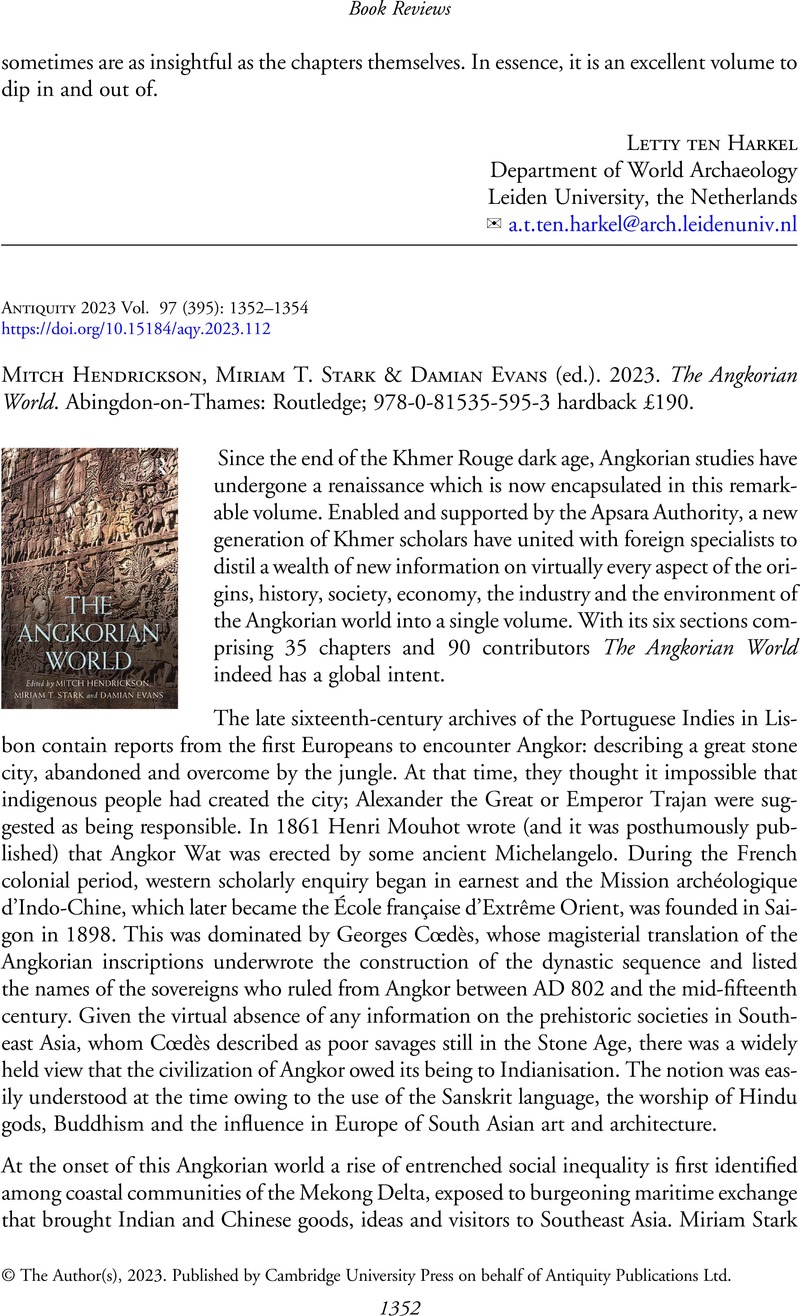No CrossRef data available.
Mitch Hendrickson, Miriam T. Stark & Damian Evans (ed.). 2023. The Angkorian World. Abingdon-on-Thames: Routledge; 978-0-81535-595-3 hardback £190.
Review products
Mitch Hendrickson, Miriam T. Stark & Damian Evans (ed.). 2023. The Angkorian World. Abingdon-on-Thames: Routledge; 978-0-81535-595-3 hardback £190.
Published online by Cambridge University Press: 14 August 2023
Abstract
An abstract is not available for this content so a preview has been provided. Please use the Get access link above for information on how to access this content.

- Type
- Book Reviews
- Information
- Copyright
- Copyright © The Author(s), 2023. Published by Cambridge University Press on behalf of Antiquity Publications Ltd.


